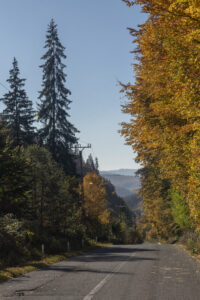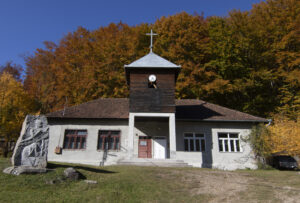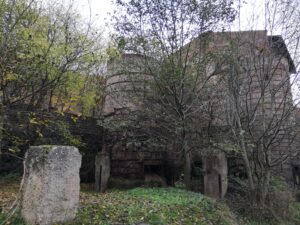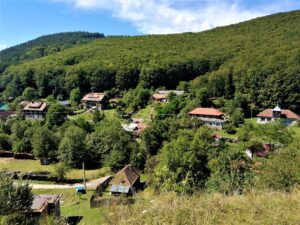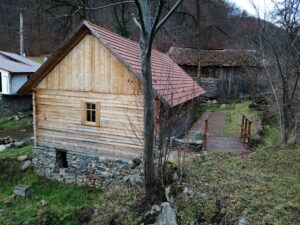Minele Lueta (Lueta Mine) is an accessory settlement of Vlăhița town. It is located in the Mic Homorod valley, halfway to Lueta village, in a picturesque environment. Iron smelting furnaces operated already in the 16th century, for which the iron ore was collected from the valleys of the Mic Homorod, Vârghiș and Tolvajos streams. The place was also called Rókaváros (Fox town) from the rudimentary mine shafts carved into the side of the mountains a few hundred years ago.
The settlement of Minele Lueta was formed after 1836 thanks to Jónás Gyertyánffy, an iron smelter and iron mine founder with Armenian family roots. After the revolution of 1848-49, the smelters were destroyed by the Austrian imperial and Russian tsarist troops, and in 1850 the new owner Miklós Demeter rebuilt them in the higher part of the Mic Homorod stream, in the area of today’s Holy Cross Mine. In this small settlement consisting of about 30 buildings the mining works officialy stopped in January, 1984.
In the center of Lövétebánya stands the building of the former trade union assembly hall (culture house). The school museum of the Gábor Áron School is located in one wing of this building, while the Roman Catholic Boldog Gizella chapel is located in the other wing. In front of the building there is a sculpture by Walter Levente Zavaczki, carved from andesite stone. The monument commemorates the hundreds of years of ironstone mining and all those who died while mining.



